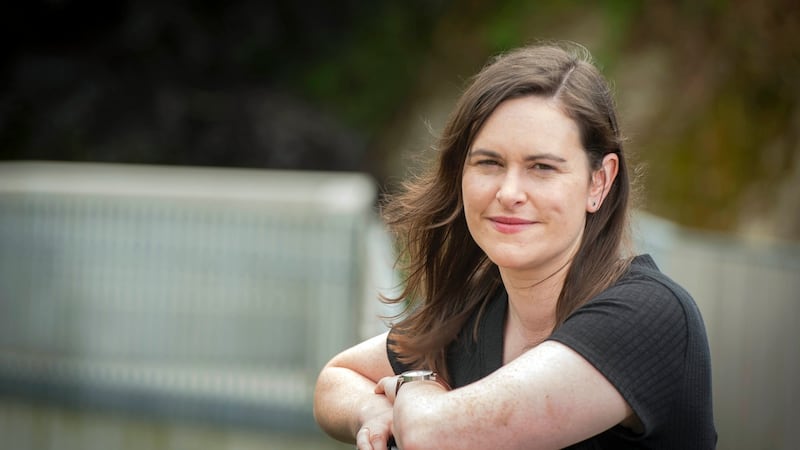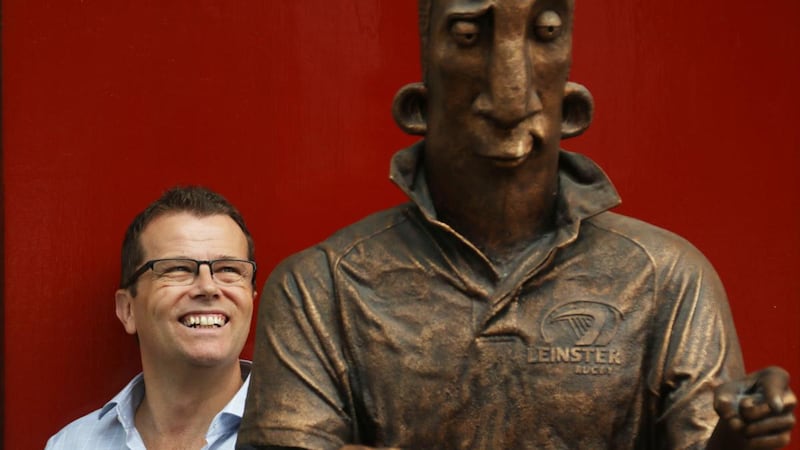It has always seemed strange to me that sport has not featured more strongly in Irish fiction. Especially when one looks at the prevalence of sport in Irish society – how it is one of the most dominant and ubiquitous cultural presences in the country. The 2019 Irish Sports Monitor reported that 46 per cent of the State’s adult population – 1.7 million people – participated regularly in sport, almost evenly split across genders.
What does sport mean for all those people? And should it not be considered worthy of our literature?
We have a strong catalogue of nonfiction sports books in Ireland, with many titles every year (with several great books from Gerard Siggins among others), and sports biographies often appear on bestseller lists. Children’s sports fiction is also popular, but sport rarely features in our adult fiction.
This scarcity is not common elsewhere. In the US, UK and many other countries, there are long and vibrant traditions of integrating sport into fiction.
Gaelic football plays a role in some wonderful short stories by John McGahern and Donal Ryan uses hurling superbly in his novels and his short story Long Puck
The dearth of Irish sports fiction is also anomalous when one considers the large body of Irish poetry about sport. In the introduction to Everything to Play For: 99 Poems about Sport (2015), its editor John McAuliffe says that there were hundreds of poems to choose from.
Likewise in the canon of Irish theatre. Playography Ireland lists 34 plays with the subject of sport which explore themes as varied and important as class issues (Studs, 1986), Traveller exclusion and discrimination (Rosie and Starwars, 1997), racism/immigration (Hurl, 2013) and toxic masculinity (Spliced, 2017).
But where is the Irish sports fiction?
Gaelic football plays a role in some wonderful short stories by John McGahern (Love of the World, Eddie Mac and The Creamery Manager) and Donal Ryan uses hurling superbly in his novels and his short story Long Puck (2015). Themes like identity, inclusion, masculinity and loss are developed through sport in those texts.
Then there’s the unlikely combination of novels about Roy Keane’s dog (Triggs: The Autobiography of Roy Keane's Dog by Paul Howard, 2012), cricket in New York City (Netherland by Joseph O’Neill, 2009) and a football team of inner city Dublin misfits (Baxter’s Boys by Patrick Osborne, 2020). Otherwise the pickings are slim unless one retreats to the 19th century’s Knocknagow and Cashel Byron’s Profession.
Dearth
In 1995, David Marcus was so concerned about this dearth that he edited a book of sports fiction and commissioned new writing. In the introduction to Irish Sporting Short Stories, Marcus writes: “Sport is, overall, a sadly neglected subject by [Irish] fiction writers.”
And that has continued until 2021, with the arrival of three outstanding and diverse books of Irish fiction featuring sport as a theme: Midfield Dynamo by Adrian Duncan, Panenka by Rónán Hession and Holding Her Breath by Eimear Ryan.

Midfield Dynamo is a book of 12 short stories and while only two of them, Midfield Dynamo and Prosinecki, have sport as a component, Duncan has artfully structured and laid them all out mirroring a soccer team and coach. Each story has been anthropomorphised into a player and the book is in three sections: Defence, Midfield and Up Front. Prosinecki, one of the great Irish short stories (of which McGahern would be proud), takes place deep inside a game when the protagonist (“a spent, age-thickened footballer”) has a moment of epiphany. The intensities of language and emotion in the text hold a mirror up to life and investigate themes such as loss, desire and regret. The decisions the footballer faces also mirror the decisions of the artist trying to balance beauty and pragmatism in his or her work. David Marcus wondered if the short story was particularly suitable to sport because of their common “brevity, compression and completeness” and Prosinecki certainly makes a case for that.
Marcus also wondered if fiction writers have ignored sport “because they regard it as more suited to the quickfire talents of the sports reporter or because it is considered to have little or no sales appeal for women? Or, could it be that the writer, as a child, had little interest in or feeling for sport, and did not develop any?” When I put that to Duncan he said that the writer “has to find sport beautiful”. But he also told me that some editors were wary of the role of football in Prosinecki until Sally Rooney published it in The Stinging Fly in 2018.
Rooney deserves special mention here, not only for championing Prosinecki or her beautiful and understated 2017 short story (Robbie Brady’s astonishing late goal takes its place in our personal histories), but also for the placing of a soccer match early in her 2018 novel Normal People to develop the book’s themes of inclusion/exclusion and “normality”.
Penalty
Rónán Hession’s second novel, Panenka, tells the story of a former professional footballer, Joseph, who is known as Panenka because of a penalty that he took for his team Seneca many years previously – Panenka being “a name that was his sadness and his story”. Hession told me that the story of Panenka was partly inspired by the fate of Daniel Timofte, a Romanian footballer who missed a famous penalty against Ireland in the 1990 World Cup and how it has dogged his life ever since.

Panenka skilfully balances Joseph’s sporting backstory with his current health predicament and his relations with the novel’s other characters – which are well developed and moving. When asked, late in the book, why he did what he did on the pitch all those years ago, Joseph says: “I just wanted to create something beautiful for them [the fans].” But the novel also shows the shared power of sport and how it can be inseparable from society: “When your world amounts to a group of people who are all connected to the same place, it’s impossible to keep any sort of separation: the people, the town, Seneca, it all becomes one thing.”
The dark side of sport is also deftly explored by Eimear Ryan in her debut novel Holding Her Breath. We learn early in the book that the protagonist, Beth, a university student on a sports scholarship, is attending a psychotherapist partly because of an incident in her sporting past when she lost her dreams of being an Olympian swimmer. Beth realises that she both “loves and resents her sport” with its ruthlessness. In a way, the novel is her journey away from feeling like a “failed Olympian” to somebody who realises that “there are realms in which swimming doesn’t matter” and “people who will not think less of her because of a bad race”.
Ryan’s use of swimming is as authentic as it is effective to advance the novel’s central coming-of-age themes of family, loss and identity. She told me that making Beth an athlete gave the character “a presence in her own body” which was important when she initiates an inappropriate sexual relationship in the story. Ryan’s choice of swimming was partly because it is a solitary – rather than a team – sport, which deepened Beth’s sense of isolation. But the leitmotif of water is also important as Beth learns more about her famous grandfather’s death by drowning.
Sports journalist
As if those three books weren’t enough, August saw the publication of the 24th novel in the very popular Ross O’Carroll-Kelly series from the aforementioned Paul Howard, called – wait for it – Normal Sheeple. Howard is well placed to utilise sport in his novels, being a former Irish sports journalist of the year. He has been ploughing virtually a lone furrow in sports fiction since the first book in the series (The Miseducation of Ross O’Carroll-Kelly: The Diary of a Schools Rugby Player) appeared in 2000. Rugby forms a major role in these comic novels as a cultural identifier and to parody social mores – as well as a means for hilarity.

In Normal Sheeple Ross decamps to west Kerry and plays Gaelic football with the local Gaeltacht team – a sport that he had previously believed was “invented for people too stupid to understand the laws of rugby”. His epic voyage from south Dublin into the heart of GAA country offers readers a new lens through which to observe and laugh at the ultimate Irish urban-rural divide.
It’s important to point out that none of these four books is overwhelmed by sport, or requires the reader to be at all interested in sport to find it engaging. Like much of the best of sports writing, the stories are not really about sport at all. All find their own balance of character development and narrative arc with sport as a kind of social and cultural scaffolding, holding them up. While all four authors have a strong interest in and feelings for sport, they are – more importantly – storytellers and, in their books, sport adds to the brilliance and relevance of their art, rather than detracting from it.
David Marcus would have approved.
Tadhg Coakley’s first novel The First Sunday in September (2018) hinges on a fictional All-Ireland hurling final











